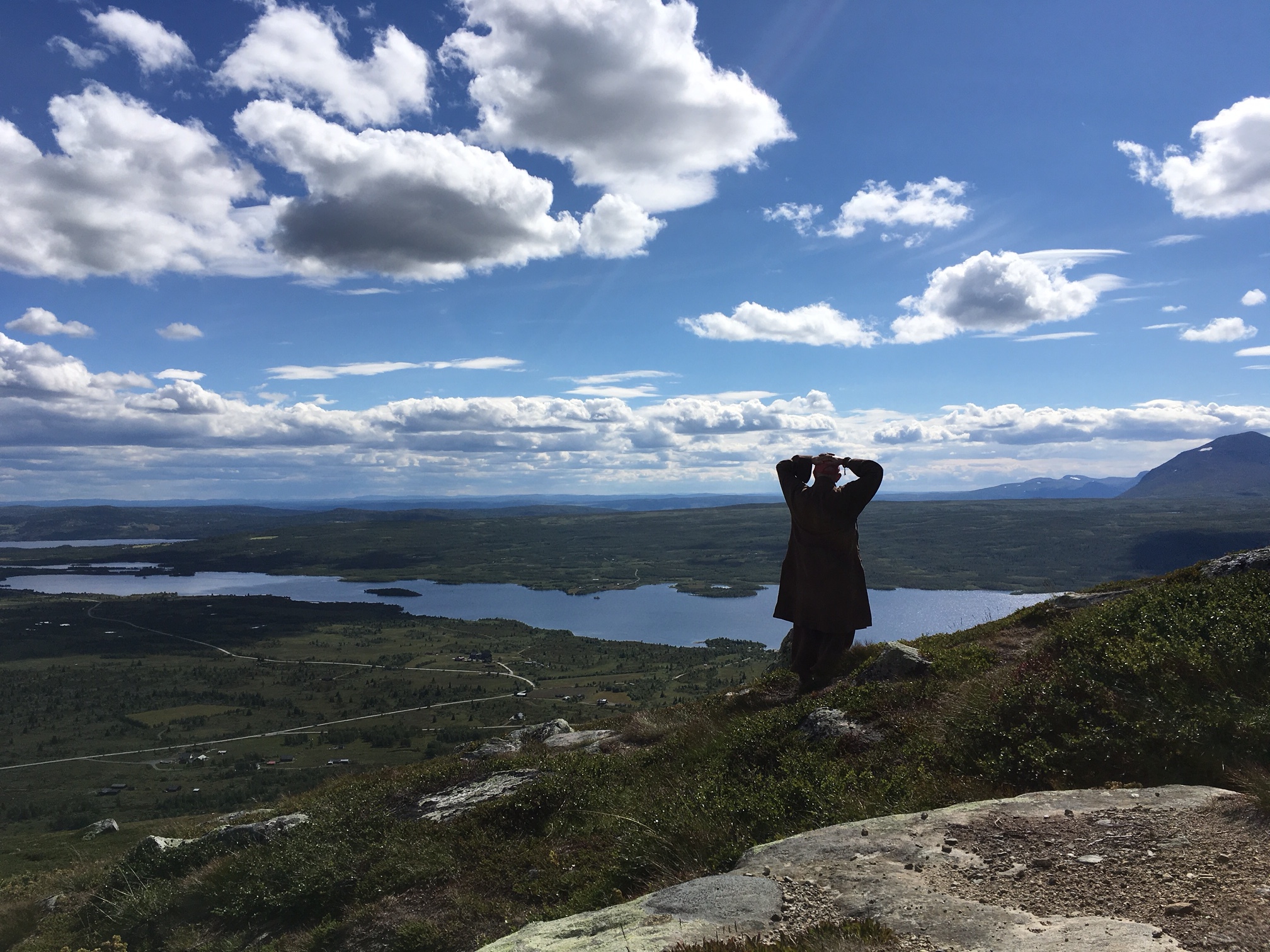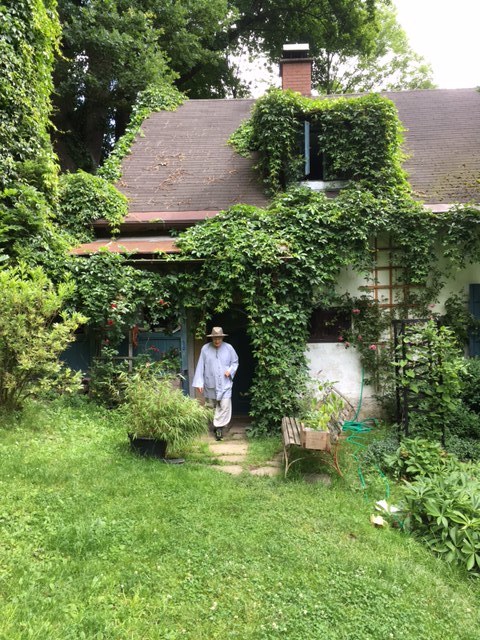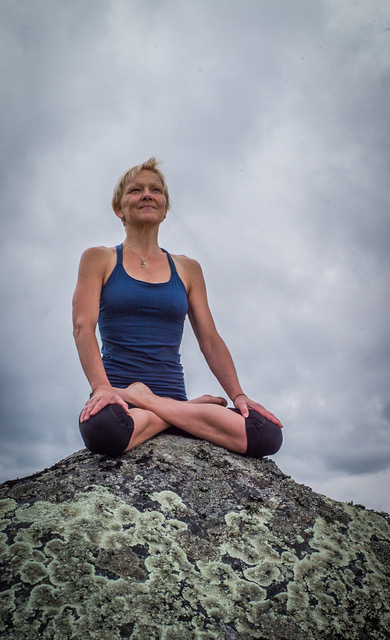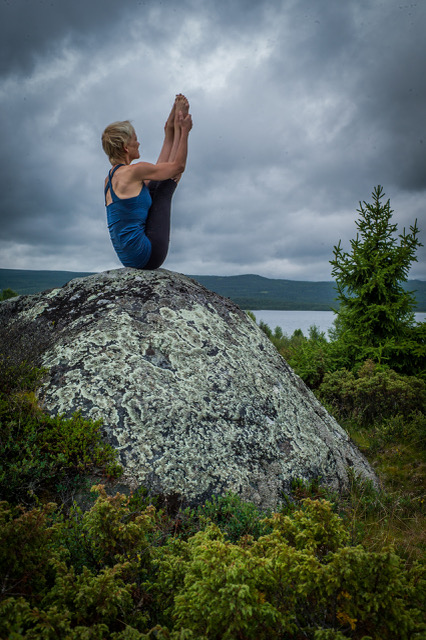Always a student....
As long as we are mere humans, we are also prone to self-deception, doubt and pride. This is precisely why we all need a teacher, someone to check in with from time to time. This summer I have been lucky enough to (re-) connect with two of my wonderful teachers, John Scott And Dhammadipa, both people of great integrity and experience, who have firmly put be on the path to weeding out some of my bad habits and presumptions:
1.Salento Italy
After more than 20 years of practicing and teaching Ashtanga yoga, I had a bit of a hard time with yoga. One reason was the thing that yoga had turned into: a "yoga market," it seemed, taken over by "Insta Babes " posing in bikinis and promoting new inventions - one more commercial than the other. "Do i really have to get involved," I thought - "is it not enough to just teach yoga any more?"
Another reason was the increasing pain in my hips and lower back, which made me doubt my practice. Was it really healthy, or was it due to my vigorous Ashtanga practice that all those "rusty spots" in the body had teamed up bothering me to the extent that I didn´t really enjoy my practice any more? Hence, I was (however reluctantly) questioning the benefit of doing my own practice and not the least of teaching it to other people.
Landing in Italy I didn´t know what to expect, I had physically embarked on a 2-week workshop given by my old teacher John Scott, with whom I had done a teacher training "back in the days" when everything was easy and I truly enjoyed my practice." Now, 10 years later, John was kind of the straw my aching body and I were clinging to.
When John welcomed us at Salento Yoga, I first noticed that my teacher had become a bit older and thinner. It was as if he himself was "condensed" into the core Yoga-body with nothing superfluous. He had, it seemed, equally condensed and refined his teaching taking a deliberate choice to depart from whatever the "current Ashtanga world" was doing - and base his teaching on how he interpreted his teacher, Pattbhi Jois. He never doubted for a moment that the intention of his guru had been to teach a logic and wholesome sequence. The intention, however, was for him, his student, to unravel.
“Form follows function”
The base line with John had always been functionality. Under the motto "form follows function" he had searched for the underlying principles and mechanics of the Ashtanga yoga sequence drawing from a long-time collaboration with anatomy teachers and body workers as well as his own research into the developmental patterns of infants. With regards to functionality, he made no compromises, and rather than fussing about the external shape of the asanas, he would teach their core mechanics This also meant that he had departed from some "Ashtanga viruses," unwholesome practices, which disregards the function of the body.
Could it be as simple as the fact that the same basic functional patterns by which a child learns to lift its head, crawl and stand up is no different from how we develop through our practice? When you understand a movement pattern, or rather when it becomes conscious and explicit, you are re-aligned with yourself, tapping into the body´s own logic understanding the way we were meant to move. Then you have an infinite possibility of movements at hand, of shifting into different shapes and different minds. Our western bodies, however, are conditioned, (due to cultural habits such as sitting in chairs and using computers) meaning we have lost our range of movement. Yoga could imply be a way of re-discovery.?
"Never give up what you got from your teacher,” I thought to myself. The duty of the student is to develop and interpret what he learnt on a deeper and deeper level. There is no such thing as blind repetition - what actually works will develop organically through testing. This is the secret to any living tradition.
Within Buddhism as I have studied for the last five years, the intention of the master of the past has been interpreted over and over again over a period of 2500 years resulting in a wide variety of practices to suit different times and cultures. And every practice, when it enters the western hemisphere, has been interpreted according to the western mind and the western way of living. There is a fine balance of keeping the genuine core and still interpret, but the test has always been "does it function or not" - i.e., does it improve our lives and decrease the physical, mental and emotional conditioning we are ensnared in!
John and me embraced by his very helpful team
2. Czhech Republic and the results of Karma
Question: How do you experience the result of good karma?
Answer: You know that you have really good karma when you find yourself close to a great teacher.
I do not know what good deeds I might have done in the past, but suddently i was invited by Dhammadipa, whom i had briefly met in Kathmandu, to spend a week in his hermitage in Czech Republic. Now,let me tell you that Dhammadipa is a teacher i respect so much that I can hardly talk in his presence. Seeing him, as a friend of mine noted, "Is like seeing the Buddha walk into the room. "So somewhat nervous I showed up in Prague airport and was met by the master himself and his assistant Dhammarama.
Rewind: During the two-hour flight to Prague I managed to worry about a lot of things: How does a great meditation teacher live? Does he spend his days absorbed in meditation? (And do I have to sit on a cushion eight hours a day?) Do I have to dress up and look "respectable" or can I wear comfy clothes? Does he receive huge donations, and has he mistaken me for being a big sponsor? While all these questions went through my head, what I worried most about was only being able to say profane and stupid things in the presence of such a wise man.
As it often happens my worries were in vain; Dhammadipa lived a modest life in a small cottage in the middle of the "Czech paradise" a protected area with stunning natural scenery. I was given a room upstairs, which turned out to be Dhammadipa´s own study- full of thick volumes of Sanskrit and Chinese grammar plus hard copies of every dictionary I have only seen in digital copies online. This was the study of an old-school master. Our days consisted of an hour meditation, (before which I did my own Ashtanga practice) a hearty breakfast, and then off into the forest for hours of walking, It turned out Dhammadipa loved picking blueberries and mushrooms.
During our long walks I learned more and more of the fascinating life story of my remarkable teacher, which could certainly be called a twist of karmic events; fleeing military service during the communist take over in Czech, the young philosophy and literature student, Tomas, roamed Europe as a devastated refugee without ID papers or money. Having nowhere to stay he sometimes hid in the night trains going through Europe, locking him self in the toilet to escape ticket control!
Finally obtaining a West German passport, but still penniless, he flicked through the phonebook to find a place to live for free. His finger landed on "Sri Lankan Buddhist monastery, West Germany" where he was allowed to live as a caretaker. This was the beginning of his more than 30 years as a monk, of learning Sanskrit, Pali, Chinese and Singhalese, and of having a career as an internationally renowned Buddhist scholar and meditation teacher.
These days his hometown, Prague, is taken over by hoards of tourists and prices have sky rocketed. Tomas has become Dhammadipa - the Island of Dharma - and has taken refuge in the forest. He is somewhat an untraditional teacher: initiated into both the Theravada and the Mahayana (Zen) orders he has practiced extensively their various methods of meditation and is immune to the hierarchic competition between different Buddhist schools. He teaches whatever method he finds most useful for his students and Yoga, he claims, whether it is from the Buddhist or non-Buddhist tradition is one, " every yogi knows this!"
In his presence I am taking my first little baby steps into the true meaning of yoga. I have read about the Buddha´s truth of suffering, the five aggregates that make up a person, the mind factors that constitute our minds and the sense objects that constitute our world, but for me these are just of lists of things that I memorize for my exams, and whereas I have studied the various stages of Samadhi and truly believe in its possibility, - my teacher Dhammadipa, experiences all this in his meditation. He sees the content of my "lists," he sees that the world around us with is pleasant and unpleasant objects are only the reflection of our own minds, he sees our habitual thought patterns. And he sometimes breaks into a laugh telling me that all that "stuff" which makes up our lives is just the surface. "It is all just a dream - always changing and impossible to grasp" "don´t worry you are a yogi now, Ellen!"
But am I really? As soon as I try to experience my mind directly, it is all a mess - and this is in spite of all my years of Ashtanga yoga and studies in Buddhist philosophy. Without people like Dhammadipa, all our study and learning remains theory and we ourselves never change. The philosophy is derived from direct yogic experiences and we are also meant to experience it -not just admire and respect it. But to do this this takes more time and commitment and than most of us can bear.
So while I am on one hand trying to cut my way through the social media jungle taking the pains to learn about Instagram, Google indexing and marketing, I am also training to realize that deep inside this is all a dream - and that certainly feels like a new beginning!









